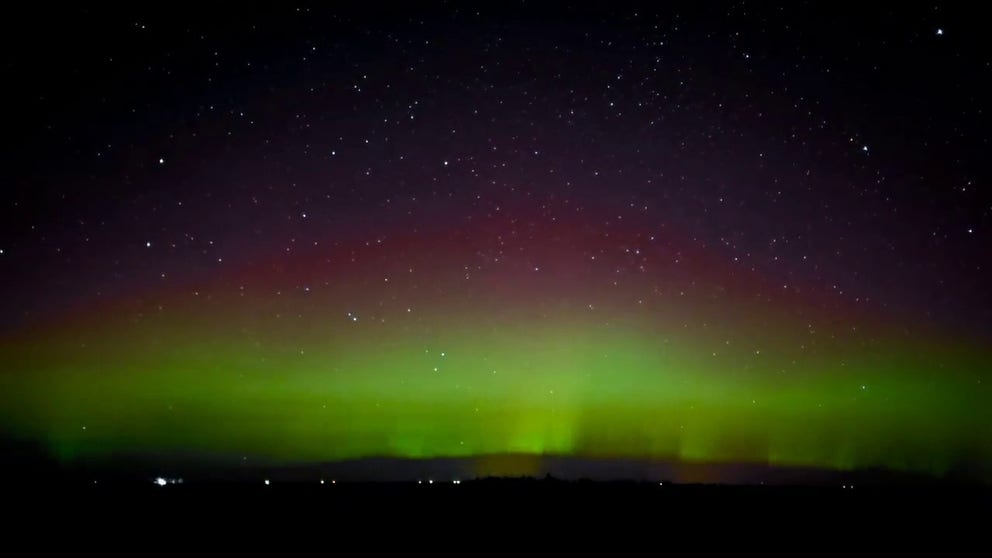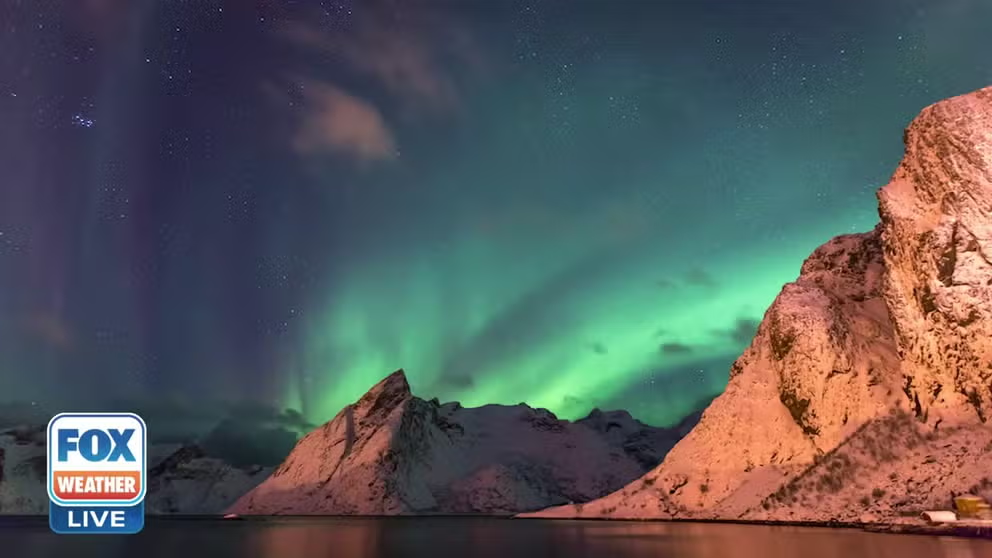Watch Northern Lights set skies on fire above Montana, Minnesota
Over the weekend, NOAA's Space Weather Prediction Center (SWPC) issued a Level G2 Geomagnetic Storm Watch after a burst of plasma from the Sun, known as coronal mass ejection or CME, was expected to arrive within Earth's atmosphere on Saturday.
Aurora lights dance above Montana
Northern lights seen in this video recorded in Glasgow, Montana on Nov. 12. (Video credit: Angel Enriquez)
GLASGOW, Mont. – Incredibly vivid green and pink northern lights danced above Montana and Minnesota over the weekend after a solar storm created aurora lights across the northern U.S.
A time lapse video taken by Angel Enriquez outside Glasgow shows pink, green and purple lights moving along the horizon with stars above in the sky.
7 THINGS TO KNOW ABOUT THE NORTHERN LIGHTS
The auroras also put on a spectacular show for those with cloudless skies across the Northern Tier.
Near Graceville, Minnesota, Carol Bauer captured the photos below of the aurora borealis, including light pillars, which are rare at lower latitudes. Pillars are created as light bounces off ice crystals falling through the air, according to the National Weather Service.
Weather observers at the Mount Washington Observatory in New Hampshire also spotted light pillars from the aurora borealis. A rainbow of lights from the 6,300-foot summit were on display with peak brightness around 10 p.m., according to the MWO.
What caused the Northern lights?
What causes the Northern Lights?
When solar activity ramps up, so do the chances of seeing a dazzling display of the Northern Lights.
Over the weekend, NOAA's Space Weather Prediction Center (SWPC) issued a Level G2 Geomagnetic Storm Watch after a burst of plasma from the Sun, known as coronal mass ejection or CME, was expected to arrive within Earth's atmosphere on Saturday.
Bright aurora light displays usually follow between 1 and 3 days after a CME leaves the Sun. The space weather events bring a barrage of electrons that interact with oxygen and nitrogen in Earth's magnetic field that surrounds the outside of our planet. Depending on the type of gas, different molecules release different colors of light.
The geomagnetic storm followed two recent strong solar storms last week that produced auroras across the northern U.S. and were seen as far south as North Texas.
If it seems like you've been hearing about northern lights or the aurora borealis more lately, it's because the Sun is in a period of increasing activity as it approaches solar maximum in its 11-year cycle.
WHAT IS THE 11-YEAR SOLAR CYCLE?
The Space Weather Prediction Center recently issued a new forecast for the solar maximum, predicting stronger activity and the peak approaching sooner than the initial forecast.





